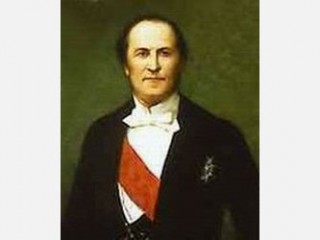
Georges Eugène Haussmann biography
Date of birth : 1807-03-27
Date of death : 1891-01-11
Birthplace : Paris, France
Nationality : French
Category : Famous Figures
Last modified : 2011-01-14
Credited as : Civic planner, prefect of the Seine, rebuilding of Paris
Baron Georges Eugène Haussmann , as French prefect of the Seine, carried out under Napoleon III a huge urban renewal program for the city of Paris.
During the administration of Baron Haussmann, 71 miles of new roads, 400 miles of pavement, and 320 miles of sewers were added to Paris; 100, 000 trees were planted, and housing, bridges, and public buildings were constructed. Elected a member of the Academie des Beaux-Arts in 1867, the year of the International Exhibition in Paris, Haussmann stated, "My qualification? I was chosen as demolition artist" (Memoires, 3 vols., 1890-1893).
Admittedly Haussmann destroyed a considerable portion of the historic city, but the purpose was to tear down the worst slums and discourage riots, make the city more accessible, accommodate the new railroads, and beautify Paris. Long, straight boulevards for parades and for the circulation of traffic could also foil would-be rioters, since the mob could not defend boulevards as readily as barricaded slum alleyways.
Georges Eugene Haussmann was born in Paris. Exceedingly ambitious, he studied law solely with the aim of becoming an administrator within the prefectorial corps. He was appointed prefect of the Seine in 1853.
The instigator of the beautification of Paris was Napoleon III, who admired London, especially its squares. Such a program of beautification would in addition stimulate the banks and solve the problems of unemployment. Haussmann spent a total of 2, 115, 000, 000 francs, the equivalent of $1.5 billion in today's currency.
Haussmann began by continuing the Rue de Rivoli as a great east-west link across Paris and by developing the areas of the Louvre and the Halles. He brought a competent engineer named Alphand from Bordeaux to continue the development of the Bois de Boulogne. Other acquaintances were introduced into the administration, notably in the construction of the famous sewers. The sewers, although underground, did not go unnoticed; Haussmann ensured that they became showplaces and even provided transportation for their viewing. One critic cynically considered the sewers "so fine that something really great should happen in them" (Memoires).
Three-quarters of the I ˆle de la Cite was destroyed to create a central area for the Palais de Justice and police headquarters and barracks. The Boulevard de Sebastopol, beginning at the Gare de l'Est, was extended across the I ˆle to provide a north-south route across Paris. The Gare du Nord was linked to the business district by the Rue La Fayette. Radial roads linked the core of the city to the suburbs. A green belt around the fortifications linking the Bois de Boulogne in the west to the Bois de Vincennes in the east did not materialize.
Haussmann was forced to retire in 1869, having succumbed to his critics, who accused him of "Haussmannomania, " heavy spending, and disrespect for the laws governing finance. One of his last acts for Napoleon III was the drafting of a proclamation for the siege of Paris in 1870.
J.M. and Brain Chapman, The Life and Times of Baron Haussmann: Paris in the Second Empire (1957), is good background, although opinionated, particularly on Garnier's Opera, and not well illustrated. Sigfried Giedion, Space, Time and Architecture: The Growth of a New Tradition (1941; 5th ed. 1967), contains superior illustrations. See also David H. Pinkney, Napoleon III and the Rebuilding of Paris (1958).
















